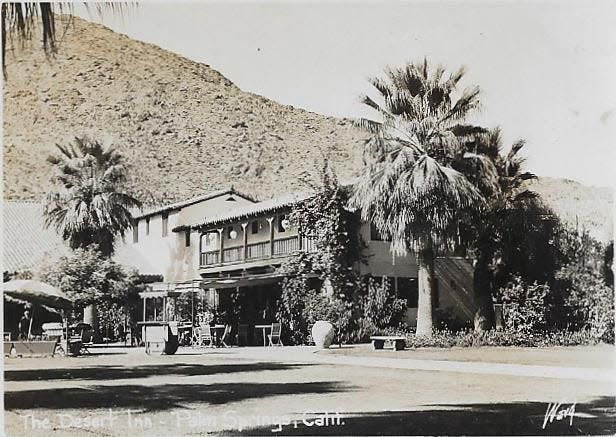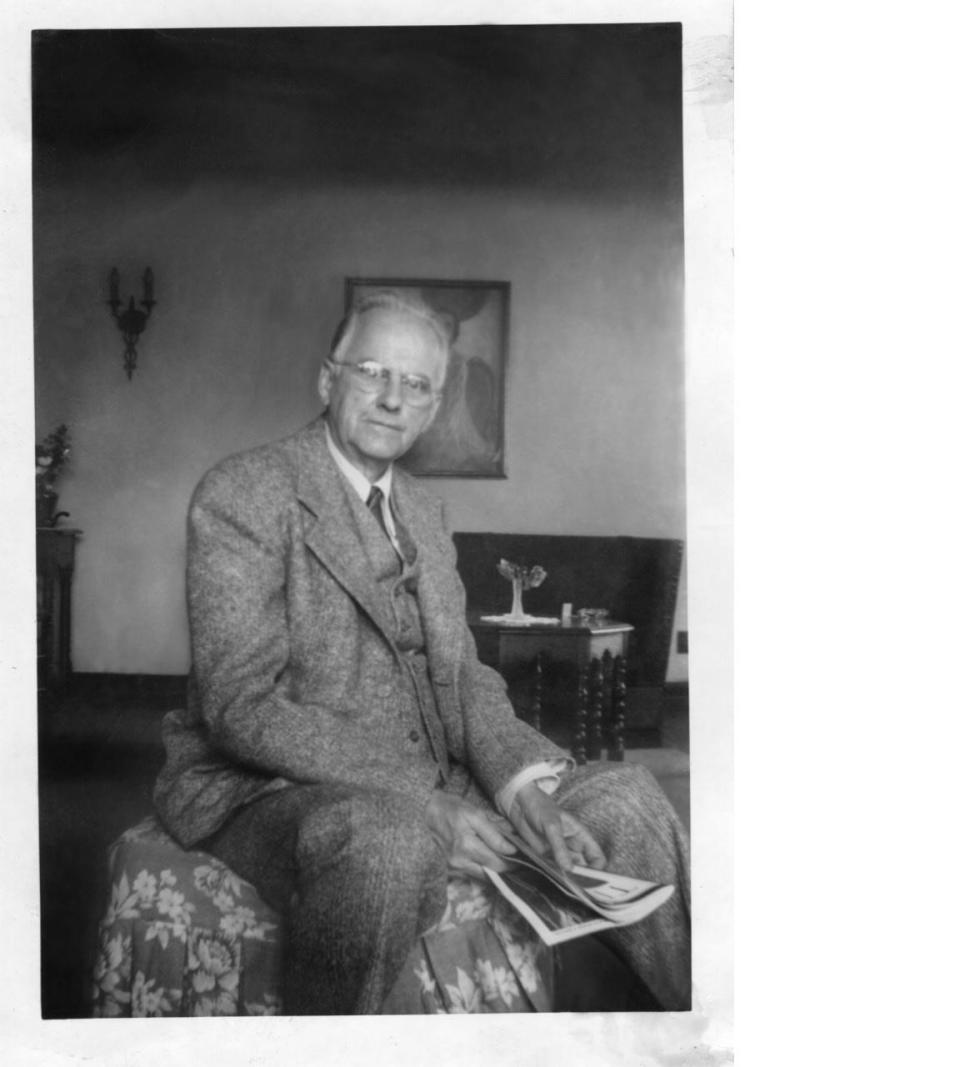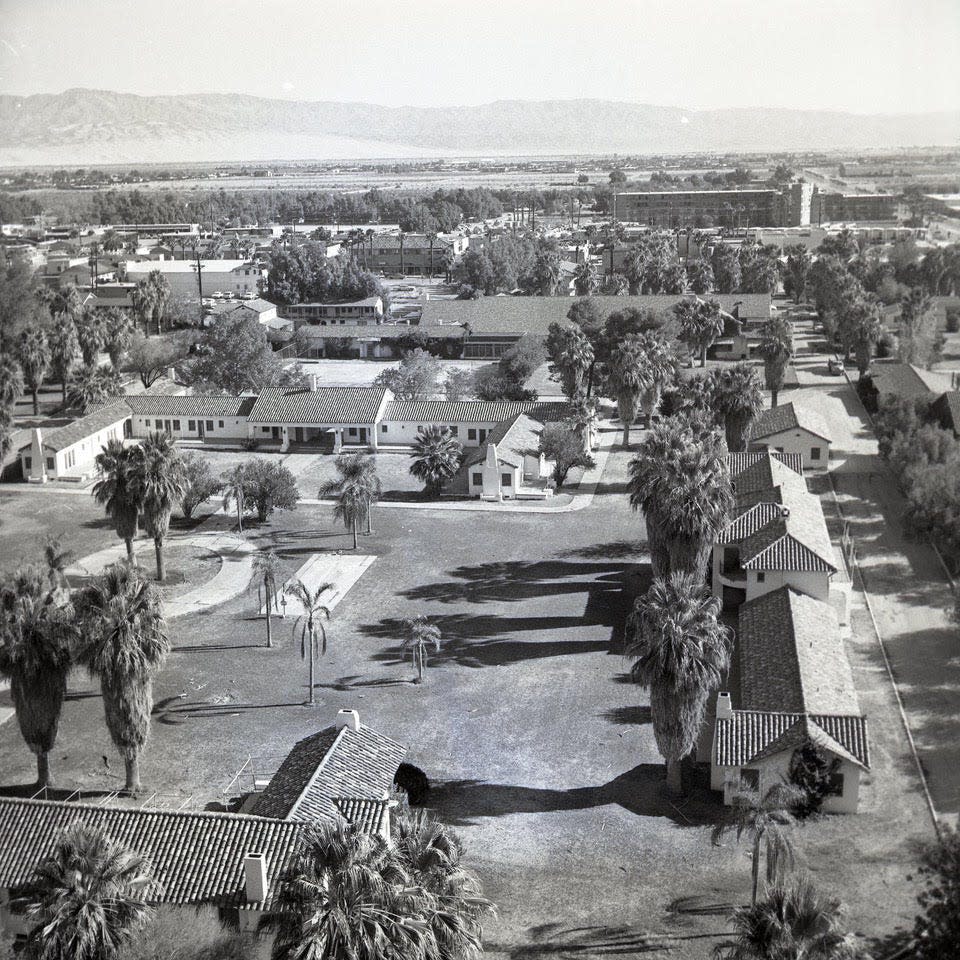Palm Springs history: William Charles Tanner and the O'Donnell House

Gazing up at the clear redwood beams knitted together in a complex roof structure designed by William Charles Tanner, Al Dorman was impressed. As the founder of AECOM, a gigantic infrastructure company, Dorman was uniquely qualified to understand the engineering involved in the roof of the Thomas O’Donnell House in Palm Springs. (Dorman’s engineering credential stamped the original plans for Disneyland and since he has literally shaped cities with his designs over a storied career.)
Admiring the redwood ceiling, Dorman mused that Tanner was no mere draftsman but a master architect.
But before Nellie Coffman selected Tanner to transform The Desert Inn from tents and clapboard cabins into the Spanish Colonial Revival masterpiece it would become, and before she tasked him with creating O’Donnell’s hillside house, Tanner was known primarily as an artist, and sometime draftsman.
In the early 20th century, Tanner rose to prominence in the art world as an illustrator for the Chicago Daily News, quickly distinguishing himself by producing a series one-panel “puzzle” pictures where the viewer had to decipher something hidden within the drawing. These proved to be a hit and ultimately led to syndication in papers across the country.
Later he studied at the School of the Museum of Fine Arts in Boston under the famous Impressionist painter Edmund C. Tarbell, who perhaps inspired Tanner to further his studies in Paris under Richard E. Miller.
Portrait painter, muralist, magazine illustrator, and architectural designer, Tanner was a true Renaissance man and involved in all artistic endeavor.

Architectural historian Steve Vaught explains, “Renowned for his portraits of prominent citizens, sweeping historical murals, and his clever ‘Puzzle Pictures,’ which were syndicated in newspapers across the country, the Canadian-born Tanner was a well-known figure in the art world from the dawn of the 20th century to the start of World War II. Yet his most enduring artistic legacy may be found, not on canvas, but in concrete, stucco, and tile.”
“Tanner saw no distinction between art and architecture and during his peak years of creativity from the 1910s through the 1930s, he regularly switched between the easel and the architect’s drawing board, producing a series of accomplished designs in Palm Springs and throughout Southern California. Tanner approached his building plans with a painter’s eye, which may explain why they rise above the merely competent and into the realm of ‘architecture as art.’”
“Just how Tanner became so skilled in architecture remains an intriguing mystery, but it is known that he spent 5 years as a draftsman with a prominent architectural firm while attending the Art Institute of Chicago. The firm’s name has eluded historians, but the education Tanner received was first-rate as evidenced by the quality and confidence of his later work.”
Tanner’s earliest known Palm Springs design was for Coffman and was hailed nationwide for its beauty and artistry. Coffman was determined to keep up with the times and badly wanted to improve her hotel accommodations. With a loan from O’Donnell she set about an ambitious plan to build lodges, casitas and a grand lobby and dining room in the Spanish style so popular in California in the 1920s.
In exchange for the loan, O’Donnell asked that Coffman supervise the building of a home for him on the mountainside behind the inn. She selected Tanner to design both.
The complex roof plan illustrated Tanner’s extreme sophistication. The O’Donnell home, Ojo Del Desierto, Eye of the Desert, was completed by January 1925 and was visible throughout the valley as the highest structure in Palm Springs for decades.
Coffman had imported Tanner from Riverside where he’d had a studio in the Carmel Tower of Mission Inn. He was working on five-panel mural, 23-feet long, depicting Juan Bautista De Anza and Francisco Garces for the hotel. In the club room, Tanner led conferences on art, literature, philosophy and politics, entertaining artistically inclined ladies and hotel guests alike. He designed houses surrounding the inn for the genteel business class of the then orange-growing capital of California.

Soon Tanner was a fixture in the desert, having transplanted himself from Riverside. Often dining with O’Donnell, Coffman and other prominent desert citizens, in 1931 he designed Invernada, named whimsically as an approximation of Never or Not Winter, for capitalist George Heigho. Purchased in 1946 by female, food company captain of industry Tillie Lewis, the house was a tour du force, Tanner’s mastery of the “concrete, stucco and tile” medium in abundant evidence.
For Indiana businessman John C. Snyder, Tanner designed Morada La Estrella, Star House or Abode of the Star in the Las Palmas neighborhood of Palm Springs. The sparkling, darling domicile featured all the intricate and soulful details in Tanner’s skillful vocabulary.
At the same time, Tanner was producing a group of similar landmark residences in the Los Feliz hills of Los Angeles. The bulk of his designs were Spanish as was the 1920s fashion, but Tanner could surprise with something completely unique according to Vaught. “The 1930 Hollywood home for pioneering female film director Dorothy Arzner was done as a Greek/Art Deco temple and his 1935 design of the First Community Church in Palm Springs is nothing less than ‘Gothic Deco.’”
For decades, according to Vaught, “the name William Charles Tanner has languished in obscurity, not for lack of talent, but rather, lack of documentation.” Tanner had been dismissed as a draftsman. But of late, more scholarly attention has been paid to this remarkable artist and architect.
Modernism Week is paying homage in a big way to this Renaissance man. Morada La Estrella will be opened for the first time for a tour thanks to its erudite and generous owners Steve Scott and Bob Eicholz. Scott will offer a talk on the recently unearthed history of Tanner’s remarkable career and contributions. And Tanner’s long overdue star will take its place among other architectural luminaries at a dedication in front of the Architecture and Design Center of the Palm Springs Art Museum at the corner of Baristo and Palm Canyon, on Feb. 24 at 1 p.m.
Preservationist and Modernism Week board member Gary Johns doggedly pursued Tanner’s legacy and has located his family, securing a rare Tanner painting which will be donated to the Palm Springs Historical Society as part of the program.
Tickets to all sorts of Spanish Colonial Revival programming, and the events recognizing the master artist and architect, no mere draftsman, may be found at go.modtix.com/e/f23.
Tracy Conrad is president of the Palm Springs Historical Society. The Thanks for the Memories column appears Sundays in The Desert Sun. Write to her at pshstracy@gmail.com.
This article originally appeared on Palm Springs Desert Sun: Palm Springs history: William Charles Tanner O'Donnell House

